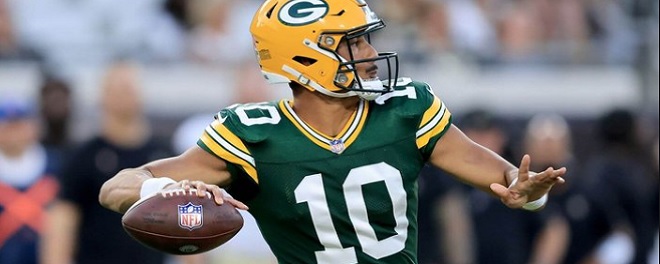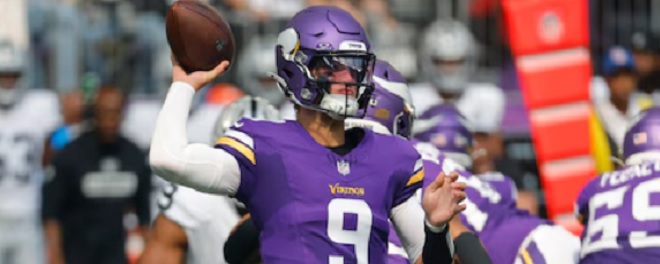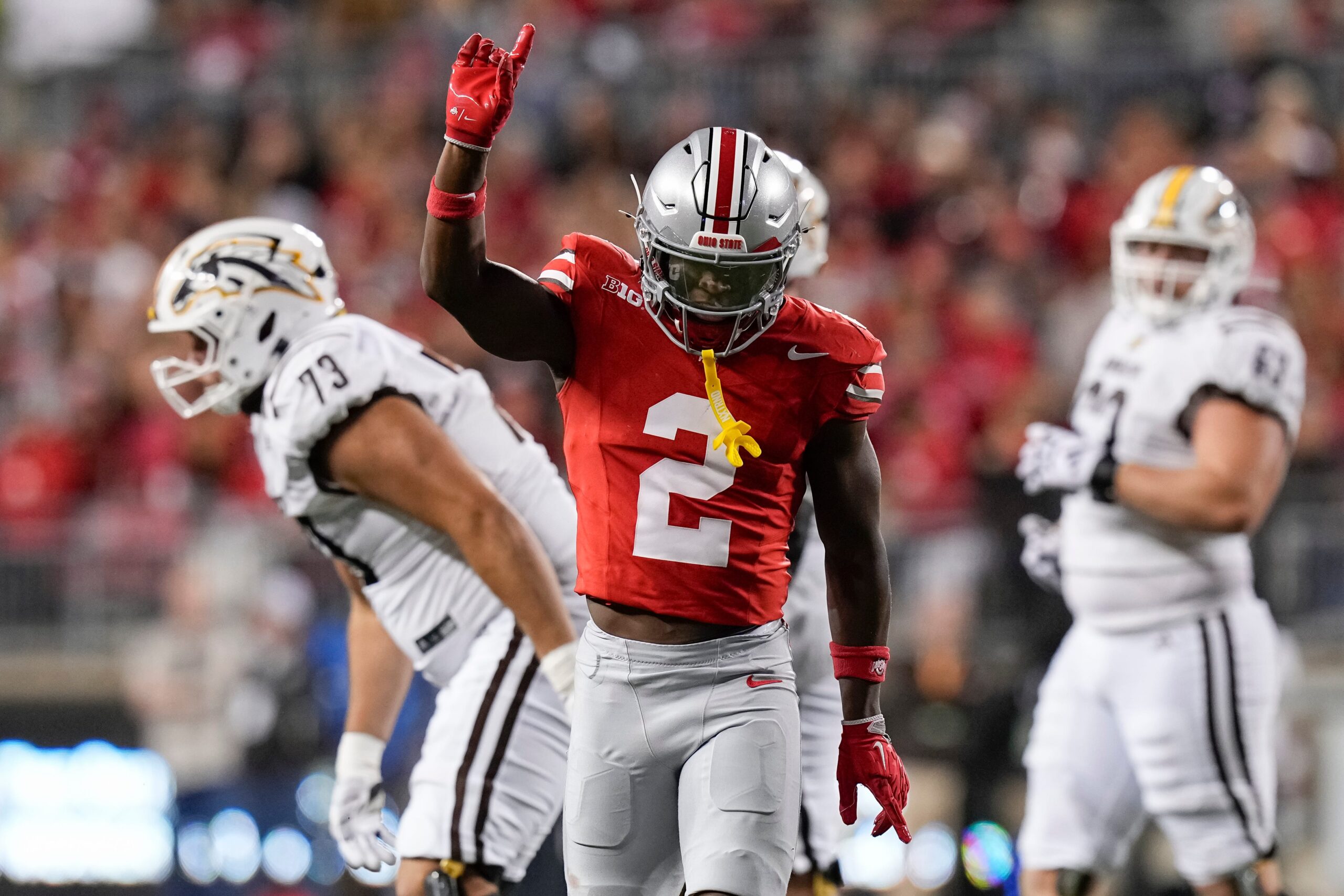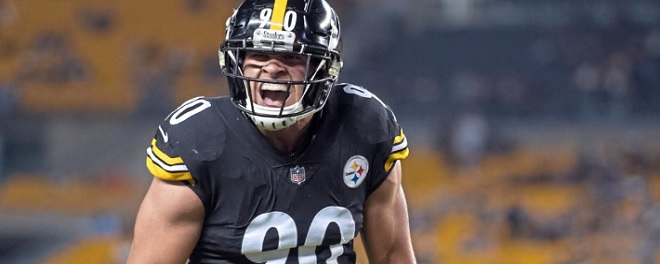Running Back Class
Early-round talent: A-Mid-round: A-
Late-round: A-
Overall grade: A-
2025 prospects vs 2024
Ashton JeantyQuinshon Judkins
Omarion Hampton
TreVeyon Henderson
Jonathan Brooks
Kaleb Johnson
Trey Benson
Ollie Gordon
Blake Corum
MarShawn Lloyd
Just to be clear, this article and series are all my opinion. I base my evaluation on my own film study and also on information I’ve gotten from general managers, directors of college scouting, national scouts, area scouts, and NFL coaches who know way more than I do.
The 2024 class was a terrible year for running backs, so it doesn’t compare well to this year. The 2025 class is a strong year for running backs. There will be some excellent values in the mid-rounds and on day three of the draft. If you were to merge the two classes together, last year’s top back was Jonathan Brooks, and he would be the fifth-rated back in this year’s class. The second-rated back, Trey Benson, would be a third-round caliber prospect this year, similar to Ollie Gordon.
Safest Pick: Ashton Jeanty, Boise State 
Previous Picks:2024 Blake Corum
2023 Bijan Robinson
2022 Breece Hall
2021 Najee Harris
2020 D’Andre Swift
2019 Josh Jacobs
2018 Saquon Barkley
2017 Leonard Fournette
2016 Ezekiel Elliott
2015 Melvin Gordon
2014 Carlos Hyde
2013 Eddie Lacy
Jeanty is a superb prospect and one of the best pure football players in the 2025 NFL Draft. For the NFL, Jeanty has a strong build with impressive speed, athleticism, excellent cutting ability, and natural running instincts. Some sources have compared him to Marshall Faulk, and others have said that Jeanty is a shorter version of Josh Jacobs.
Biggest Bust Potential: Trevor Etienne, Georgia 
Previous Picks:2024 Audric Estime
2023 Sean Tucker
2022 Kyren Williams
2021 Chuba Hubbard
2020 A.J. Dillon
2019 David Montgomery
2018 Rashaad Penny
2017 Wayne Gallman
2016 Kenneth Dixon
2015 Mike Davis
2014 Lache Seastrunk
2013 Montee Ball
Etienne was a solid college back for Florida and Georgia, but he never became the dominant producer he was expected to be. With the Bulldogs, Etienne had a good supporting cast with future NFL offensive linemen, yet he had the worst production of his career. Etienne could be a second-day pick, and third-round players are expected to start out as backups and develop into starters. It would not suprise me if Etienne disappointed and ended up topping out as only a backup.
Running Back Rankings by Attributes
Natural Running Ability:
NFL prototype: Saquon Barkley, Eagles
- Ashton Jeanty
- Quinshon Judkins
- Omarion Hampton
- TreVeyon Henderson
- Ollie Gordon II
- Kaleb Johnson
Recap: There are still a number of coaches in the NFL who want an old-school approach to a running-based offense. Plus, a lot of passing-led offenses want a back who can wear down defenses in the second half and clinch a win with a strong ground attack. This group all are talented runners with some natural ability.
Jeanty is a devastating running back with an excellent skill set and he could be a special back at the pro level. There is a lot to fall in love with Jeanty. The two traits that jump out immediately are the speed and strong build that make Jeanty a nightmare for defenses. He has an excellent first step with an instant burst to hit the hole. Along with firing quickly upfield, Jeanty has serious speed with a second gear to accelerate into the secondary. If defenses don’t redirect or cause him to slow down, Jeanty can go the distance as he has real speed to break off long runs. He may not be as fast as Jahmyr Gibbs, but Jeanty could have speed comparable to Breece Hall. Jeanty has natural running instincts, patience, vision, and feel.
For the NFL, Judkins is a special back as he is big, fast, and explosive. Judkins has a serious burst to hit the hole and accelerate to the second level. With his strong build, Judkins runs through tacklers and is capable of ripping off lots of yards after the first defenders hit him. He has easy speed to explode into the secondary and is a threat to produce a chunk run on any carry. To go along with his size, Judkins has nice knee bend to run behind his pads along with contact balance. He can be a devastating one-cut, downhill runner as Judkins has good instincts and feel for how to attack a defense.
Hampton demonstrates good running fundamentals, like the patience to let holes develop, the vision to see lanes about to come open, and good body lean to run behind his pads. Hampton has the quickness to hit the hole and is a powerful bull stampeding downhill. In the open field, Hampton has a second gear to break off long runs, although he lacks elite speed for the NFL level, so some defenders will be able to catch him from behind. In short yardage and goal line, Hampton is a touchdown machine with a real nose for the end zone.
Henderson is a fast back who has serious speed with a second gear to run away from defenses. With his jets, Henderson is a potential home run hitter who is a threat to rip off long runs on any carry. Henderson is a strong runner with a burst to get upfield. With natural feel and patience, Henderson lets holes develop, and he has quickness to dart upfield when he decides to go North-South. With his strong build, Henderson can power through tacklers and finishes runs well. He has lower body strength and contact balance to maintain his feet while pushing through defenders. The compact build lends itself to Henderson running behind his pads with good knee bend, and he opens it up in the open field to break off long runs. Henderson is not a super elusive runner and is more North-South style, but he shows some moves to change direction with cuts around defenders.
Gordon has a good skill set for the next level, as he is a big running back with straight-line speed. There is natural ability for Gordon to be an effective runner as he has very good vision and is a patient runner. While Gordon is big, he is not overly physical and will just plow over would-be tacklers with dominant violence. Gordon uses his size to pick up yards after contact, and he has good contact balance to maintain his feet after contact. Gordon has quality speed to accelerate to the hole before it closes, and he can really open it up in the open field to break off long runs. While Gordon does not have game-breaking speed, Gordon runs well for a big back.
For the NFL, Johnson is a big back who has good running instincts. He has good patience to let running lanes develop, vision to find them, and is a decisive downhill runner. Johnson has a burst to hit the second level and is capable of ripping off yards in chunks. There is no doubt that Johnson has a good skill set with size, quickness, and athleticism. However, Johnson is not a physical runner. Considering how big he is, it is surprising that he is not much of a bruiser that will run over tacklers in the secondary. He is not a physical force, and his feet sometimes go dead on contact. Johnson also runs upright and is not adept at dropping his pads, which would help him to be more effective at breaking tackles and picking up yards after contact. In order to be the best pro that he can possibly be, Johnson needs to start running with more anger, physicality, and violence. Right now, he is a large back with a finesse style.
Pass Receiving:
NFL prototype: Christian McCaffrey, 49ers
- Ashton Jeanty
- Ollie Gordon II
- Omarion Hampton
- TreVeyon Henderson
- Quinshon Judkins
- Kaleb Johnson
Recap: The passing-driven NFL has many offensive coordinators emphasizing running backs’ ability to help the aerial offense over their running ability. Coaches want backs who have good hands, run good routes, and can rack up yards as outlet receivers. This group is very good overall, as the majority are good receivers out of the backfield. None of them may end up being as dynamic as Christian McCaffrey or Jahmyr Gibbs, where they could legitimately line up as a slot receiver like McCaffrey or Gibbs.
Jeanty is not as shifty as McCaffrey or Gibbs, but he could be used some out of the slot as he is fast, explosive, and sudden. In 2023 he gave proof those skills with 43 catches. Jeanty is very athletic running routes and shows an incredible ability to adjust his powerful frame to passes. Jeanty has soft, natural hands and is very reliable to make the catch. As a pro, Jeanty could be a superb outlet receiver and a mismatch weapon when going against linebackers.
Many big backs struggle in the passing game, but that is not the case with Gordon. In space, Gordon is natural getting to his spot and shows nice hands to make receptions. Gordon can function as a check-down outlet and run choice routes to help his quarterback. Over the past two seasons, Gordon had 68 catches and he was very good at being an outlet receiver.
In the passing game, Hampton has good hands for a big back. He makes some nice catches and is dangerous in space. Hampton won’t be a twitchy route runner who can move to slot receiver, but he can be a good outlet to the sideline, run check-down routes, and hurt defenses on screens.
In the passing game, Henderson is a capable outlet receiver who can run the basic running back routes. He has good hands and is natural in the open field. Judkins was a solid outlet receiver in college football and he should be in the NFL. He is too tight to line up as a slot receiver, but Judkins could be dangerous on screens and passes to the flat. As a receiver, Johnson is athletic and capable of catching the ball out of the backfield. He is not prolific, but he should be a contributor.
Pass Blocking:
NFL prototype: Ezekiel Elliott, Free Agent
- TreVeyon Henderson
- Quinshon Judkins
- Ashton Jeanty
- Omarion Hampton
- Ollie Gordon II
- Kaleb Johnson
Recap: This is huge for offensive coordinators. If a running back can’t pass protect, he is going to have a hard time seeing the field in the NFL. If the defenses know that a running back isn’t trusted to protect the quarterback, it is an immediate tip about what the play is going to be. Coaches want multiple backs with pass-protection skills. The importance of blitz pickup and pass blocking is vital for playing time for a running back.
All of these backs have the potential to contribute as blockers. They all will need development for knowing where to be, who to pick up, and being assignment sound in their blitz protection diagnosis. Henderson is the most pro ready as he is an outsanding pass protector. He was phenomenal in identifying rushers, picking up blitzers, executing the block, and helping his quarterback. Henderson’s pass-blocking skills are very advanced. At Ole Miss, Judkins was not asked to pass protect very much, but he showed a huge jump in ability at Ohio State. Under offensive coordinator Chip Kelly, Judkins was a good blocker and did not get beat when called on to protect Will Howard. Judkins has the upside and ability to turn into a good blocker at the pro level. Like all college backs, Jeanty will need to learn blocking for blitz protection, but he showed some blocking potential in college. Gordon and Johnson need improvement as blockers.
Yards After Contact:
NFL prototype: Derrick Henry, Ravens
- Omarion Hampton
- Ashton Jeanty
- Quinshon Judkins
- TreVeyon Henderson
- Ollie Gordon II
- Kaleb Johnson
Recap: For running backs to be consistently successful in the NFL, they have to have the ability to get yards after contact. Breaking tackles is critical to moving the chains and setting up good down and distance. This group offers a nice set of prospects that can pick up yards after contact.
Hampton is a power runner who is strong enough to break tackles and picks up a lot of yards after contact. He combines a strong build with a hard-nosed style and contact balance to make it very hard for defenders to knock him to the ground. Jeanty, Judkins, and Henderson are physical runners who break a lot of tackles and are dangerous to pick up yards after contact. Gordon and Johnson are able to pick up some yards after contact, but they are not as physical as the top four. Johnson has a reoccuring habit of letting his legs go dead on contact at times.
Block Scheme Versatiliy:
NFL prototype: Jahmyr Gibbs, Lions
- Ashton Jeanty
- TreVeyon Henderson
- Quinshon Judkins
- Omarion Hampton
- Kaleb Johnson
- Ollie Gordon II
Recap: The zone-blocking scheme calls for backs to have quickness and physicality. They need the ability to follow the moving wall, use vision and anticipation to see the hole opening, and make one cut to run downhill. It is a different type of running compared to a set, designed play in a power man scheme. Power man backs need to be able to create for themselves. They need to be shifty with cutting ability to dodge a potential tackler after a missed block. Almost every team in the NFL has runs some power man and some zone scheme.
All of these backs have versatility for either blocking scheme. Jeanty is a great fit in any scheme as he has the one-cut downhill burst for zone and the elusiveness to create on his own for the zone. Henderson and Judkins ran both schemes well in college. Hampton, Johnson, and Gordon could do either but they are better fits as zone runners overall.





